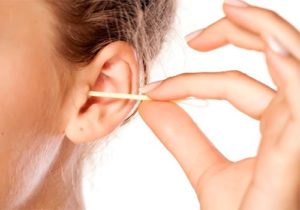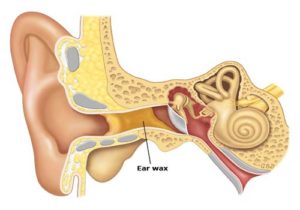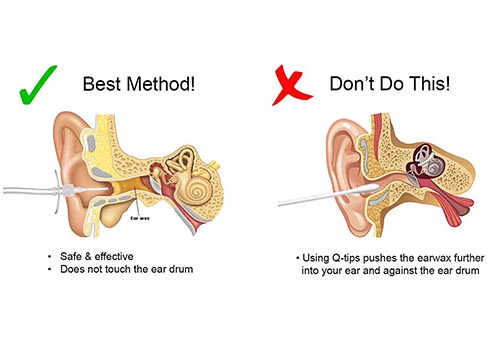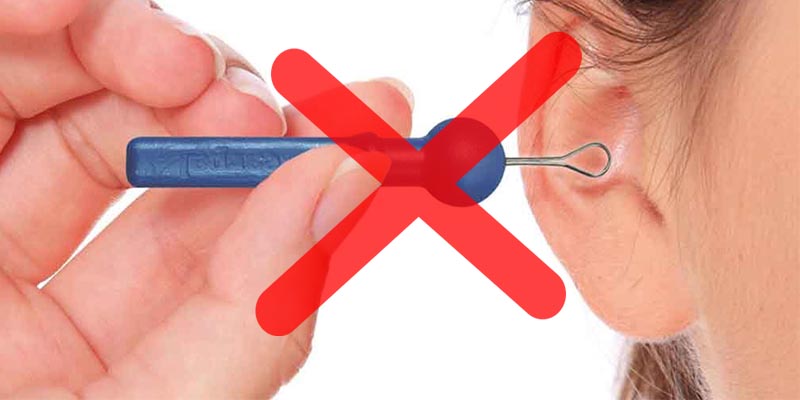Ear Wax Myths And Facts
Cotton swabs, paper clips, fingernails, ballpoint pens, toothpicks, tweezers, safety pins and bobby pins. These are some of the objects people have stuffed in their ears in a misguided attempt to clean out their earwax.
Everyone has their own ideas about how to care for their ears and clean them. Some people swear by certain methods, others are curious as to what to do and how to do it safely. So let’s try to find answer to all our queries by going over the facts and busting all the myths about ear cleaning.
Query 1: Is having ear wax is bad or abnormal?
Myth:
Ear wax is like ‘dirt’ or ‘gunk’, which should not be there in ear normally.
Fact:
Earwax or cerumen is made of dead skin cells and secretions of the ceruminous and sebaceous glands present in the external ear. The amount and nature of earwax varies depending on ethnicity, age, environment, and even diet. It is there for good reasons.
• It is a natural moisturiser, preventing the skin inside the ear from becoming too dry.
• It traps dirt, dust, small particles and insects before they can reach deep into the canal
• It also prevents bacteria and other infectious organisms from reaching the inner ear.
Query 2: Is having ear wax is a sign of poor hygiene?
Myth:
Earwax is a sign of dirty ear, reflects uncleanliness.
Fact:
According to the American Academy of Otolaryngology–Head and Neck Surgery, “cerumen or earwax is healthy in normal amounts and serves as a self-cleaning agent with protective, lubricating, and antibacterial properties.” It is not a reflection of uncleanliness, in fact, it’s a sign of normal, healthy ears.


Query 3: Does ear require regular cleaning?
Myth:
Ear should be routinely cleaned to get rid of any wax buildup.
Fact:
For 95% of the population, ear is able to self-clean. Skin follicles lining the ear canal perform a conveyor belt function moving earwax to the front of the ear. Over a period of time, it either falls out or washes away. Gently wiping the outermost part of ear with a big cotton ball or a tissue, taking care not to insert anything into the ear canal, should be enough.
Query 4: Are Q-tips good for ears?
Myth:
Using Q-tips feels good, it clears the ears, it makes it easier to hear and it gets rid of that pesky water that hangs out the ear after a shower.
Fact:
One might think they are making ears cleaner and better, instead, they are making them worse by using Q-tips.
• Q-tips pushes the earwax further into the ear canal causing impaction.
• It might cause injury and painful ear infections by putting a hole through the eardrum, or scratching the skin.
• The reason for an addiction to use Q-tips is the creation a vicious itch and scratch cycle.
• Since the earwax provides lubrication, removing it can simply make ears drier, motivating to keep sticking swabs in there in a mistaken attempt at relief.

Query 5: What should be done if wax build up in ears causes discomforting symptoms?
Myth:
In case of wax build up, it should be removed using Q-tips, hair pin, safety pin, keys etc. Irrigation with chemicals like hydrogen peroxide and ear candling are other effective options.
Fact:
None of the above mentioned methods are medically advised and cause more damage to ear than any benefit. If there are symptoms of impacted wax like hearing loss, feeling of fullness or blockage, tinnitus, itching, pain, discharge or odour, help of a medical professional should be sought. They will be able to look properly into the ears and determine if there is a wax buildup or another problem. They will also be able to safely clean out the ears and provide guidance for future prevention.
CRUX
#Ear is a sensitive organ :
Handle it sensitively.
#Ear is a ‘no trespassing zones’ :
Leave it alone.
#Nature has made ear self cleaning:
Do not worry.
#Stuffs like paper clips, bobby pins , safety pins, toothpicks, keys, pens, tweezers and candles have other important jobs to do :
No DIYs for ear cleaning.
#If ears do need any help :
Let that help be professional.
Dr. Shreha Pathak
M.S. E.N.T.


